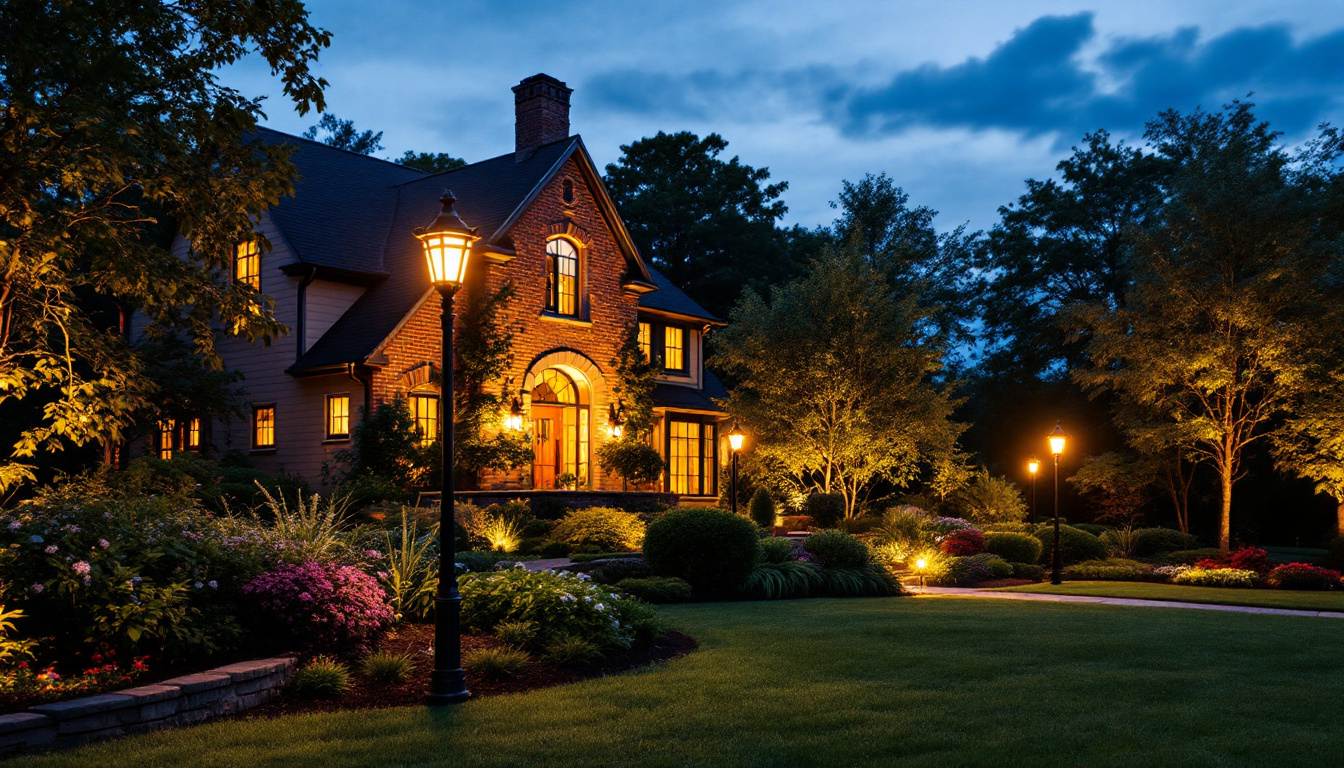
In the evolving landscape of residential and commercial lighting, the integration of motion sensors into lighting systems has become increasingly popular. For lighting contractors, understanding how to effectively implement motion sensors in conjunction with traditional light switches is crucial to ensuring client satisfaction and system reliability. This article delves into the common issues faced during this integration and provides practical solutions for lighting contractors.
Motion sensors are devices that detect movement within a specified area and activate lighting based on that movement. They can significantly enhance energy efficiency and convenience, making them a desirable feature in modern lighting systems. However, their installation and integration with existing light switches can present challenges. These sensors can be particularly beneficial in areas such as hallways, staircases, and outdoor spaces where lighting is often needed intermittently. By using motion sensors, homeowners can reduce their energy consumption and lower electricity bills while ensuring that spaces are well-lit when needed.
There are several types of motion sensors available, each with its unique advantages and disadvantages. Passive Infrared (PIR) sensors, for example, detect body heat and are commonly used in residential settings. Ultrasonic sensors, on the other hand, emit sound waves to detect movement and are often utilized in larger commercial spaces. Additionally, there are dual-technology sensors that combine both PIR and ultrasonic technologies to minimize false alarms and improve accuracy. Understanding the differences between these types is essential for contractors to make informed decisions about which sensor to use in specific applications. For instance, while PIR sensors are typically more cost-effective and energy-efficient, ultrasonic sensors can cover larger areas and work effectively in spaces with obstructions that might block infrared signals.
While motion sensors offer numerous benefits, they are not without their issues. One common problem is false triggering, where the sensor activates lights unnecessarily due to pets, passing vehicles, or even changes in temperature. This not only leads to energy waste but can also frustrate clients who expect the system to function seamlessly. To mitigate this, many modern sensors come equipped with adjustable sensitivity settings, allowing users to fine-tune the detection range and minimize unwanted activations. Additionally, some advanced models include features like pet immunity, which can help prevent false triggers caused by smaller animals.
Another issue is the placement of the sensors. Incorrect positioning can result in inadequate coverage, leaving dark spots in a room or area. Contractors must carefully consider the layout of the space and the intended use to ensure optimal sensor placement. It’s also important to account for potential obstructions, such as furniture or walls, that could interfere with the sensor’s line of sight. Regular maintenance and recalibration of the sensors can further enhance their effectiveness, ensuring that they continue to perform optimally over time. Furthermore, educating clients about the proper use and limitations of motion sensors can lead to better satisfaction and fewer misunderstandings regarding their functionality.
The integration of motion sensors with traditional light switches is a key consideration for lighting contractors. This process can be straightforward, but it requires attention to detail to avoid potential pitfalls.
When connecting motion sensors to light switches, wiring is a critical aspect that cannot be overlooked. proper wiring ensures that the sensor can communicate effectively with the light fixture. Contractors should familiarize themselves with the specific wiring requirements for the motion sensor being used, as these can vary significantly between models.
It is also essential to consider the power source. Some motion sensors require a neutral wire for operation, while others do not. Understanding these requirements will help contractors avoid issues during installation and ensure the system functions as intended. Moreover, it is advisable to use high-quality wiring materials to prevent any potential electrical hazards and ensure longevity of the installation. Using wire connectors that are rated for the specific load can also enhance safety and reliability.
Not all light switches are compatible with motion sensors. Contractors must ensure that the switches used can handle the load and are designed for use with motion sensors. For example, standard toggle switches may not be suitable for this purpose, while smart switches or dimmer switches might be a better choice.
Additionally, some motion sensors come with built-in override features, allowing users to manually control the lights if needed. Contractors should educate clients about these features to enhance user experience and satisfaction. Furthermore, it is important to consider the placement of the motion sensors themselves; positioning them correctly can significantly improve their effectiveness. For instance, placing sensors in areas with high foot traffic or near entry points can ensure that lights activate promptly when needed, thus enhancing both convenience and energy efficiency. Educating clients on the optimal settings for sensitivity and time delay can also maximize the functionality of the installed system, ensuring that it meets their specific needs and preferences.
Once the motion sensors and light switches are installed, thorough testing and calibration are essential. This step ensures that the system operates correctly and meets the client’s expectations.
Functionality tests should be conducted to verify that the motion sensors activate the lights as intended. This includes testing the range of the sensor, the sensitivity settings, and the response time. Contractors should simulate various scenarios to ensure the system can handle real-world conditions effectively.
During these tests, it is also important to check for any false triggering. If the sensors activate without any movement detected, adjustments may be necessary. This could involve recalibrating the sensitivity settings or repositioning the sensors for better coverage. Additionally, testing should encompass different times of day and varying light conditions, as ambient light can significantly affect sensor performance. By performing these comprehensive tests, contractors can ensure that the system is not only functional but also optimized for energy efficiency, reducing unnecessary power consumption.
After installation and testing, providing clients with training on how to use the new lighting system is crucial. This includes explaining how the motion sensors work, how to adjust settings, and how to override the system if needed. Offering ongoing support can also help address any concerns or issues that may arise after installation.
In addition to basic training, it can be beneficial to provide clients with a user manual or quick reference guide that outlines common troubleshooting steps and tips for maximizing the system’s efficiency. Workshops or follow-up sessions can also be organized to reinforce learning and address any advanced features that clients may wish to explore, such as integrating the lighting system with smart home technology. This not only empowers clients to make the most of their new system but also fosters a positive relationship between contractors and clients, ensuring satisfaction and encouraging future referrals.
Even experienced lighting contractors can fall prey to common mistakes when integrating motion sensors with light switches. Awareness of these pitfalls can help ensure a smoother installation process and a more satisfied clientele.
One of the most significant mistakes is failing to assess the environment where the motion sensors will be installed. Factors such as the layout of the space, the presence of obstacles, and the intended use of the area can all impact the effectiveness of the sensors. Contractors should take the time to evaluate these factors before installation to avoid issues later on.
Lighting contractors must also be aware of local codes and regulations regarding the installation of motion sensors and lighting systems. Failing to comply with these regulations can result in fines or the need for costly rework. Staying informed about the latest codes ensures that installations are not only safe but also legal.
One of the primary benefits of integrating motion sensors with light switches is the potential for enhanced energy efficiency. By reducing unnecessary energy consumption, contractors can help clients save on utility bills while also promoting environmentally friendly practices.
The integration of smart technology with motion sensors can further enhance energy efficiency. Smart motion sensors can be programmed to adjust lighting based on occupancy patterns, ensuring that lights are only on when needed. This technology can be particularly beneficial in commercial settings, where occupancy can vary significantly throughout the day.
Additionally, smart systems can provide valuable data on energy usage, allowing clients to make informed decisions about their lighting needs. Contractors should consider recommending these advanced options to clients looking to maximize their energy savings.
Lighting contractors have a unique opportunity to promote sustainable practices through the use of motion sensors. By educating clients about the benefits of energy-efficient lighting solutions, contractors can help foster a culture of sustainability. This not only benefits the environment but can also enhance the contractor’s reputation as a responsible and forward-thinking professional.
Integrating motion sensors with light switches presents both opportunities and challenges for lighting contractors. By understanding the types of motion sensors available, addressing common issues, and ensuring proper installation and testing, contractors can provide clients with reliable and efficient lighting solutions.
Moreover, avoiding common mistakes, staying informed about local regulations, and promoting energy-efficient practices can enhance the overall client experience. As the demand for smart and sustainable lighting solutions continues to grow, lighting contractors who embrace these technologies and practices will be well-positioned for success in the industry.
Ultimately, the key to avoiding issues lies in thorough preparation, continuous education, and a commitment to quality workmanship. By prioritizing these elements, lighting contractors can ensure that their projects not only meet but exceed client expectations, paving the way for long-term relationships and future opportunities.
Ready to elevate your lighting projects with the best in motion sensor technology? Look no further than LumenWholesale, where we provide lighting contractors with the highest quality, spec-grade lighting products at unbeatable wholesale prices. Say goodbye to the middleman and hello to superior lighting solutions that meet the highest industry standards. With our hassle-free bulk buying and free shipping, you can ensure your projects shine with reliability and high performance. Don’t compromise on quality or value—explore our selection and start saving with LumenWholesale today.

Explore the transformative journey of staircase lighting, from traditional designs to cutting-edge innovations.

Discover the key qualities that distinguish top lighting contractors when it comes to installing yard lights on a pole.

Discover how lighting contractors can enhance their services and boost client satisfaction by integrating outdoor porch lights with built-in outlets.

Discover the benefits of solar-powered camping lamps, the eco-friendly solution for energy-efficient lighting on your outdoor adventures.